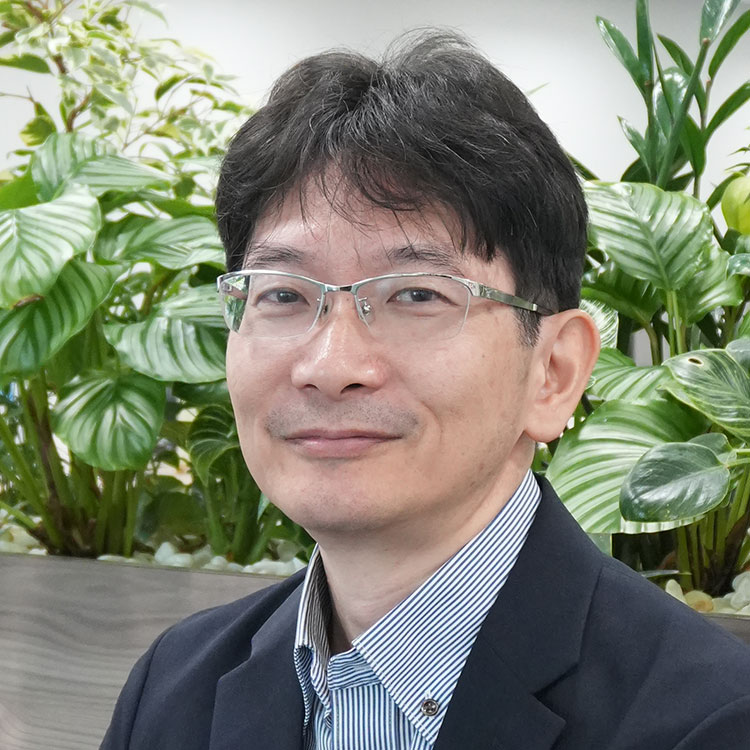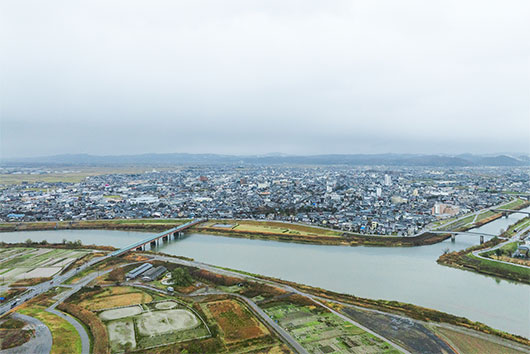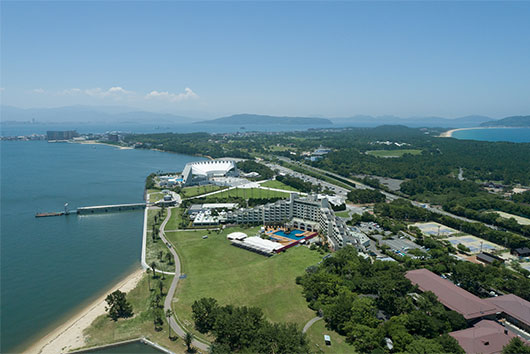The proportion of social infrastructure that has been in place for more than 50 years is rapidly expanding. However, many local governments are facing difficulties in maintaining and managing infrastructure due to a lack of personnel and funds. As a result, they are currently considering "Regional Infrastructure Group Regeneration Strategy Management (abbreviated as "Gun-Mane")," which would involve wide-area government collaboration and the efficient maintenance and management of infrastructure across multiple fields. Currently, 11 model regions across the country have been selected, and consideration is being given to their implementation. PACIFIC CONSULTANTS is actively supporting Gun-Mane, including involvement in all of these model regions. We interviewed Kojiro TODANI from the Infrastructure Management Sec.,Infrastructure Management Dept., Transportation Infrastructure Div., and Shigeto TANAKA from the Infrastructure Management Sec.,Osaka Transportation Infrastructure Dept., who are spearheading the initiative, about the current state of Gun-Mane and its future prospects.
If you would like to know more about "Comprehensive Entrustment of Infrastructure to Private Sector
," please also refer to this article.
INDEX
- The maintenance and management of social infrastructure facing the risk of aging issue
- What is the Regional Infrastructure Group Regeneration Strategy Management (Gun-Mane: Group Management)?
- Model projects launched in 11 regions across the country
- Issues with group management revealed
- PACIFIC CONSULTANTS supports all 11 model regions
- Playing a part in wide-area collaboration through group management
The maintenance and management of social infrastructure facing the risk of aging issue
Much of Japan's social infrastructure, including roads, bridges, and tunnels, was built all at once during the postwar period of rapid economic growth. As a result, the proportion of facilities that are more than 50 years old will continue to increase at an accelerating rate. Furthermore, the problem of aging cannot be understood simply by looking at the surface figure of 50 years. The actual situation varies greatly depending on the location, usage environment, and maintenance status. In fact, the sewer pipe that caused the large-scale road collapse that occurred in Yashio City, Saitama Prefecture in January 2025 was installed in 1983, so it is less than 50 years old. Taking all of this into consideration, we must conclude that much of Japan's social infrastructure is already at high risk of causing serious accidents or damage.
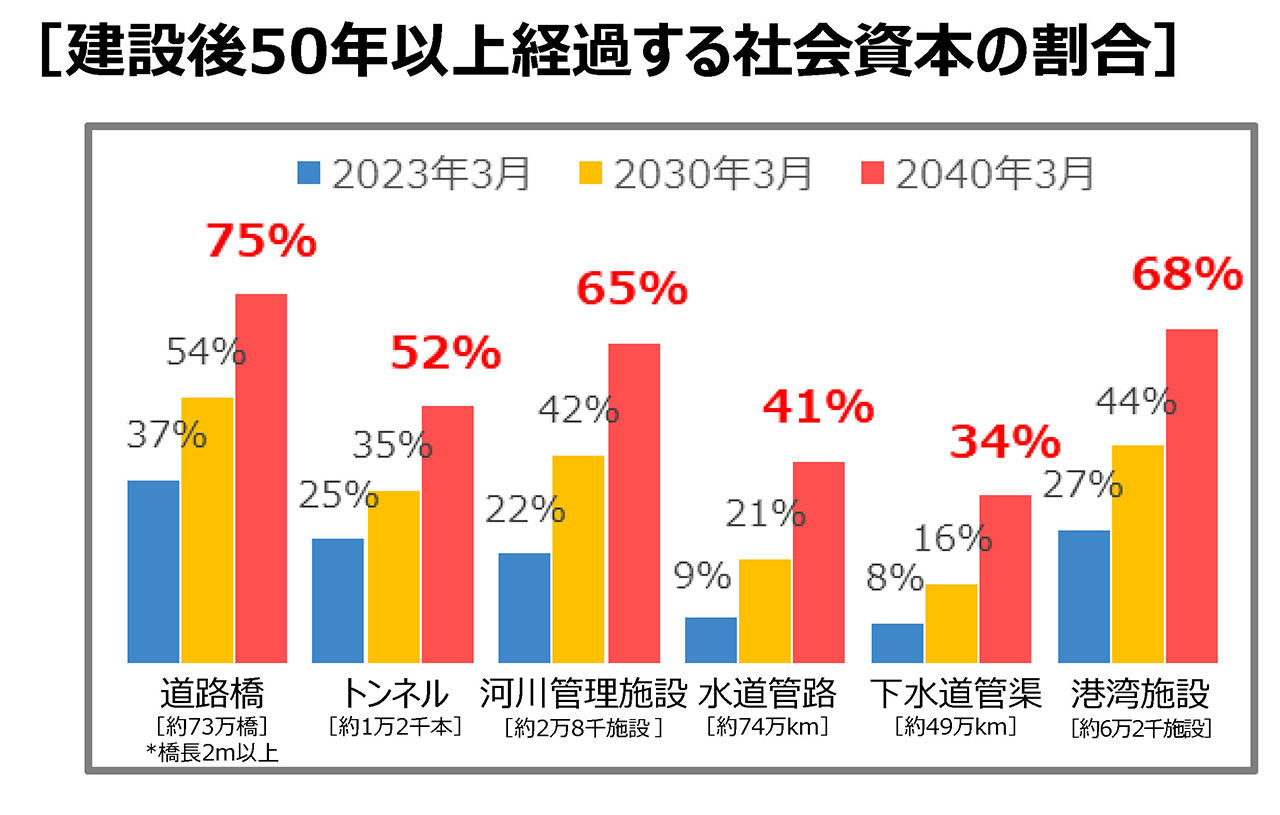
Furthermore, among the local governments that maintain social infrastructure, particularly small municipalities, there are insufficient technical staff and budgets compared to the number of facilities that require maintenance, and daily responses tend to be delayed. Some municipalities are even slow to respond to malfunctions or are unable to respond adequately.
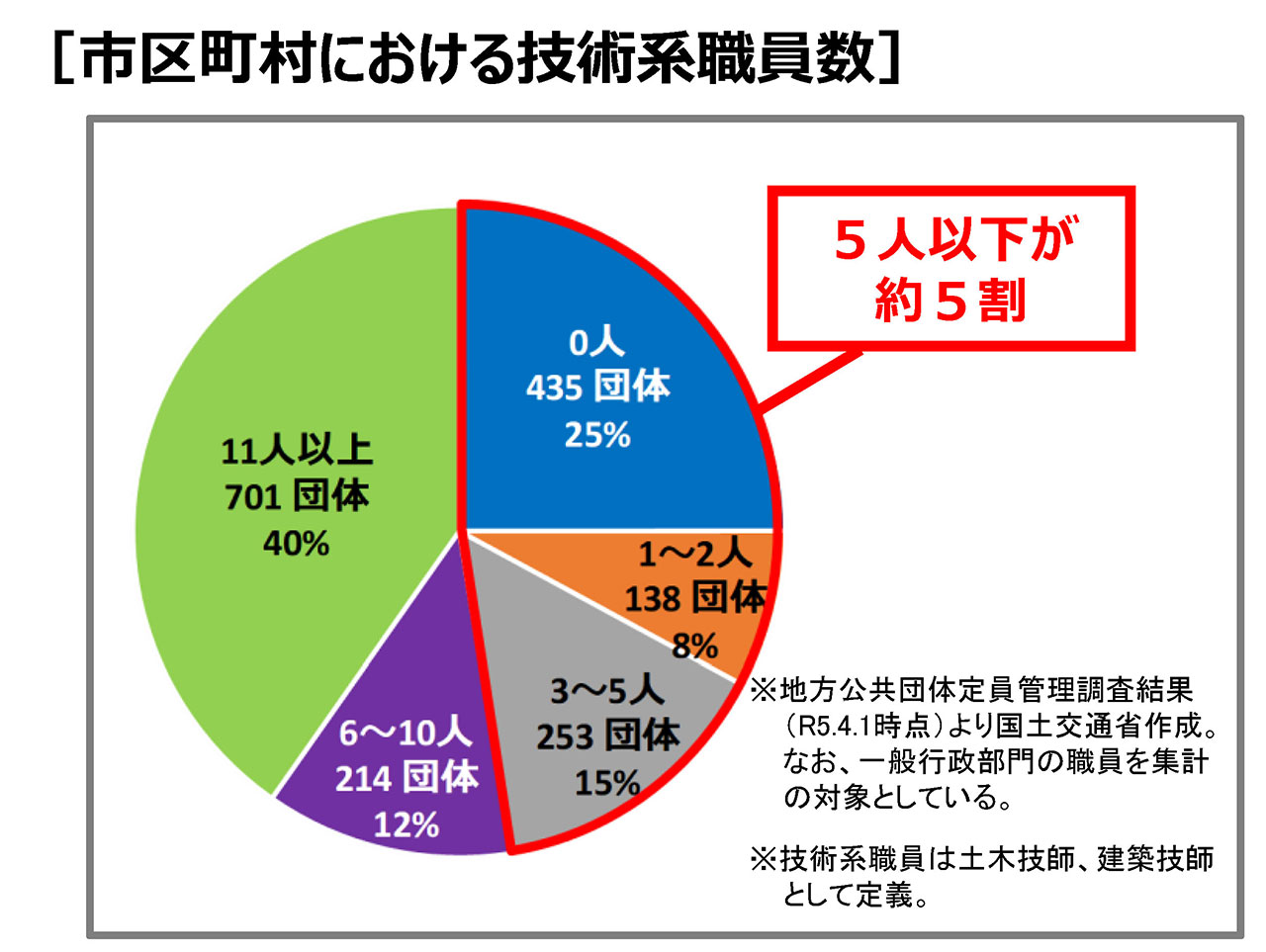
What is the Regional Infrastructure Group Regeneration Strategy Management (Gun-Mane: Group Management)?
Against this backdrop, the Council for Social Capital Development proposed the "Regional Infrastructure Group Regeneration Strategy Management," or "Gun-Mane: Group Management," in December 2022. This takes a broad perspective that goes beyond existing administrative districts, and treats multiple, multi-sector infrastructure such as roads, parks, and water supply and sewerage systems as a "group". By considering a combination of renewal, consolidation, reorganization, and new construction, the council aims to maintain the functionality and performance of infrastructure needed by the region.
The key word was "bundling." Infrastructure management can no longer be carried out by the local government alone. The idea is to involve a variety of people and bundle them together to maintain the infrastructure. By creating a "bundle of local governments," "bundle of engineers," and "bundle of business sectors," even a town or village with no technical staff could collaborate with prefectures or neighboring cities to complement their technical knowledge, place orders for the management of roads, rivers, parks, etc., and even collectively carry out management tasks such as patrols. This is what they thought would lead to more efficient management.
There are two types of "bundles of local governments"
Case 1: One city, town or village takes the lead and collaborates with multiple cities, towns or villages (prefectures not included)
Case 1': Multiple municipalities within the jurisdiction cooperate based on existing wide-area cooperation organizations and councils.
Case 2: Prefectural governments (headquarters, local offices, etc.) take the lead and cooperate with multiple municipalities within their jurisdiction.
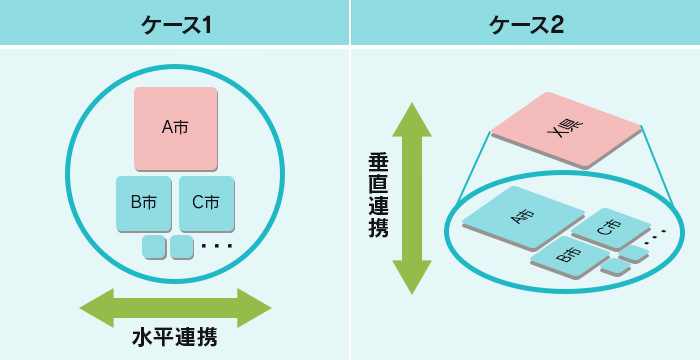
However, this group management is merely a basic concept of bundling infrastructure beyond the boundaries of administrative districts and types of infrastructure, and the term is not yet strictly defined. Furthermore, it has not yet been embodied as a well-defined business method.
Ministry of Land, Infrastructure, Transport and Tourism therefore publicly solicited model regions for group management, with the aim of creating actual precedent-setting examples of group management in these model regions and then spreading them nationwide. Applications began in September 2023. Various forms of group management responded to the call, with regions with different challenges responding, and in December of the same year, Ministry of Land, Infrastructure, Transport and Tourism selected 11 regions as model regions. These 11 regions will concretize their projects with advice from experts on the "Committee on Regional Infrastructure Group Regeneration Strategy Management Plan Formulation Methods (Group Management Planning Study Group)" and the "Committee on Regional Infrastructure Group Regeneration Strategy Management Implementation Methods (Group Management Implementation Study Group)," and the national government will provide support for these efforts.
Model projects launched in 11 regions across the country
The 11 examples shown in the table have been selected as model regions. Seven are wide-area collaborations and 4 are multi-disciplinary collaborations. The Ministry of Land, Infrastructure, Transport and Tourism also published the "Group Manegment Handbook" in October 2025. Through two measures, the government hopes to establish Group Management as a future infrastructure maintenance and management method, by specifically promoting the 11 examples and publishing the handbook.
Types and target areas of group management model regions
| Typology | Local Government | Road | River | Park | Sewerage | Others | |
| Wide-area Collaboration | Vertical Collaboration | Wakayama Prefecture (And 1 other city and 3 towns) | ● | ― | ― | ― | ― |
| Hiroshima Prefecture (And 2 other towns) | ● | ― | ― | ― | ― | ||
| Horizontal Collaboration | Makubetsu Town, Hokkaido (And 1 other town) | ● ○ |
― | ○ | ― | ― | |
| Kaizuka City, Osaka Prefecture (And 7 other cities and 4 towns) | ● | ― | ● | ● | ― | ||
| Yabu City, Hyogo Prefecture (And 2 other cities and towns) | ● | ― | ― | ― | ― | ||
| Uda City, Nara Prefecture (And 3 other villages) | ● | ― | ― | ― | ― | ||
| Masuda City, Shimane Prefecture (And 2 other towns) | ● | ― | ― | ― | ● (Agricultural and Forestry Road) | ||
| Multidisciplinary Collaboration | Odate City, Akita Prefecture | ○ | ○ | ○ | ○ | ― | |
| Kusatsu City, Shiga Prefecture | ○ | ○ | ○ | ― | ― | ||
| Mihara City, Hiroshima Prefecture | ○ | ○ | ○ | ― | ― | ||
| Shimonoseki City, Yamaguchi Prefecture | ○ | ○ | ― | ○ | ○ (Port road) | ||
●: Consideration of wide-area collaboration (multiple municipalities)
○: Consideration of multi-sectoral collaboration (single local government)
Issues with group management revealed
Following the Ministry of Land, Infrastructure, Transport and Tourism's public call for proposals, projects began to be formed all over the country, but at the same time, this also highlighted the various challenges that exist in promoting group management.
One of these is the difficulty of reaching consensus among local governments working together horizontally. There are large differences in the "degree of difficulty" each local government faces when it comes to infrastructure maintenance. The funds and human resources available to them vary, and the issues they face as local governments differ in the first place. It is not easy to overcome these differences and align interests to form wide-area collaboration. The local government that takes the lead in this effort must have a broad perspective, a sense of mission, and a flexible strategy to protect the entire region while helping local governments that are already struggling to maintain their infrastructure on their own. However, if this means forcing sacrifices on the residents of their own region, they will not agree.
It is also essential to collaborate with local businesses that are at the forefront of maintenance and management. However, when multiple local governments collaborate, the problem of how to coordinate between the businesses arises. If they are businesses, competitors from other regions may come to their area and take away their work, which would only be a negative for local businesses. How to coordinate interests not only between local governments but also between private business sectors has emerged as an issue for group management.
PACIFIC CONSULTANTS supports all 11 model regions
PACIFIC CONSULTANTS supports local governments in their comprehensive private contracting and PPP/PFI initiatives. For example, since the early 2000s, Sanjo City in Niigata Prefecture has been proposing ways to streamline and improve administrative management through public private partnership (PPP), including the development of public facilities using private funds (PFI). Sanjo City then launched the two-year "Comprehensive Entrustment of Maintenance and Management Phase I Project" in April 2017. The initiative has been expanded in stages, and in the spring of 2019, PACIFIC CONSULTANTS joined the JV to launch the five-year Phase II comprehensive entrustment to private sector project.
Sanjo City's Comprehensive Entrustment to Private Sector Project
In June 2024, this initiative won a Special Award at the Cabinet Office's 1st PPP/PFI Business Excellence Award (in case study section for projects implemented in local public organizations with a population of less than 200,000), and in January 2025, it won the Minister of Land, Infrastructure, Transport and Tourism Award at the 8th Infrastructure Maintenance Award.
PACIFIC CONSULTANTS has been leveraging the knowledge and know-how it has accumulated through its early involvement in comprehensive entrustment to private sector to quickly expand support for cluster management initiatives nationwide. Currently, PACIFIC CONSULTANTS is providing support tailored to the challenges faced by each region in all 11 model regions (40 local governments in total) selected by the government.
Furthermore, PACIFIC CONSULTANTS is also supporting the "Group Management Handbook" currently being created by Ministry of Land, Infrastructure, Transport and Tourism, and once completed, the government plans to use this as a basis for holding seminars for local governments and businesses across the country.
Playing a part in wide-area collaboration through group management
As part of the efforts of eight cities and four towns in the Senshu region, including Kaizuka City, Osaka Prefecture, which has already begun activities as one of the 11 regions, PACIFIC CONSULTANTS has joined a collaboration agreement on municipal road maintenance as a business operator and has begun actual regional activities. The collaboration agreement was signed on March 31, 2025, among the eight cities and four towns in the Senshu region, Mitsui Sumitomo Insurance Co., Ltd., Osaka University Graduate School of Engineering, and PACIFIC CONSULTANTS. Specifically, road damage data will be obtained by analyzing images captured by Mitsui Sumitomo Insurance Co., Ltd.'s dashcams using AI. Osaka University Graduate School of Engineering and PACIFIC CONSULTANTS will then analyze and examine this data to develop a system useful for preventive road maintenance, including setting appropriate management standards for the future. We believe this will serve as a pioneering example of a method for wide-area road maintenance using group management.
The government has added a new item to the list of priority projects eligible for support under the Road Maintenance Project Subsidy System, which will come into effect in April 2023: "Projects must be implemented through wide-area collaboration in model areas for 'Group Management.'" Going forward, Group Management will become increasingly important when considering infrastructure maintenance and management methods.
PACIFIC CONSULTANTS will utilize its strengths as a consultant with the most extensive knowledge of group management to explore what future infrastructure maintenance and management should look like together with local governments across the country.




